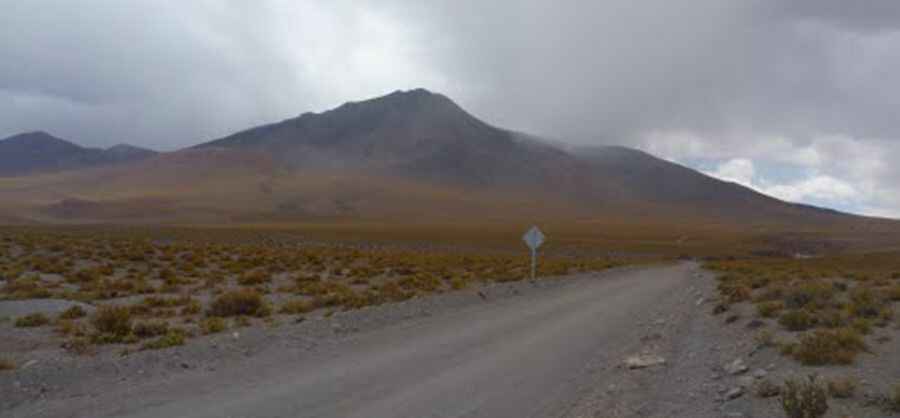Cordón de Inacaliri
Cordón de Inacaliri is a volcano at an elevation of 5.395m (17,700ft) above the sea level, located on the Chilean-Bolivian border. It’s one of the highest mountain roads of the country.

The road to the summit, located in the Central Andes mountain range, is gravel, rocky, tippy and bumpy at times. One mistake can have serious consequences. It’s a mining road. Road conditions are always changing. Winter comes early and stays late on this trail, so you may only be able to safely run it in the middle of the summer. Avoid committing your vehicle to what is in front of you until you are sure of what you are getting into because things could get worse. 4x4 vehicle required. A traveler on this road must be experienced and completely devoted to safe, slow and obstacle-conscious driving to deter danger. This is definitely not a Sunday drive. The steep drive will take some skill, some patience, and some tolerance for vertigo. Stay alert for potential turnouts as you may meet traffic in inconvenient locations.
The summit is located on the border of Nor Lípez province in the Bolivian department of Potosí and the Ollague province, in Antofagasta Region of Chile. Due to the high elevations and exposure, the road is subject to strong winds and rapid weather changes. Be prepared for the cold and wind! High winds blow here all year long. Even in summer you can confront with snowy days. Temperatures here in the winter are brutally cold. Adverse weather conditions can prompt closure of the road. It can often be treacherous, with ice and snow accumulating even in the summer, so exercise caution as you make your way.
Do not take this drive if you have respiratory problems or any type of heart condition. Babies under 4 months of age should not make the ascent, either. Notorius lack of oxygen that tests the organisms and a high degree of steepness. Most people feel altitude sickness at around 2,500-2,800 meters. Extremely low oxygen for engine combustion. A major hazard of altitude is the sickness that can indiscriminately affect anyone regardless of age or fitness. The summit has about 40% less oxygen than at sea level, thus breathing is more difficult. Your pulse rate will increase and movement will be more laborious at the summit. The high elevation with its risk of altitude sickness, weather concerns, steep road grade, and overall inaccessibility make the travel dangerous and difficult.
Pic: marceloescobarberna